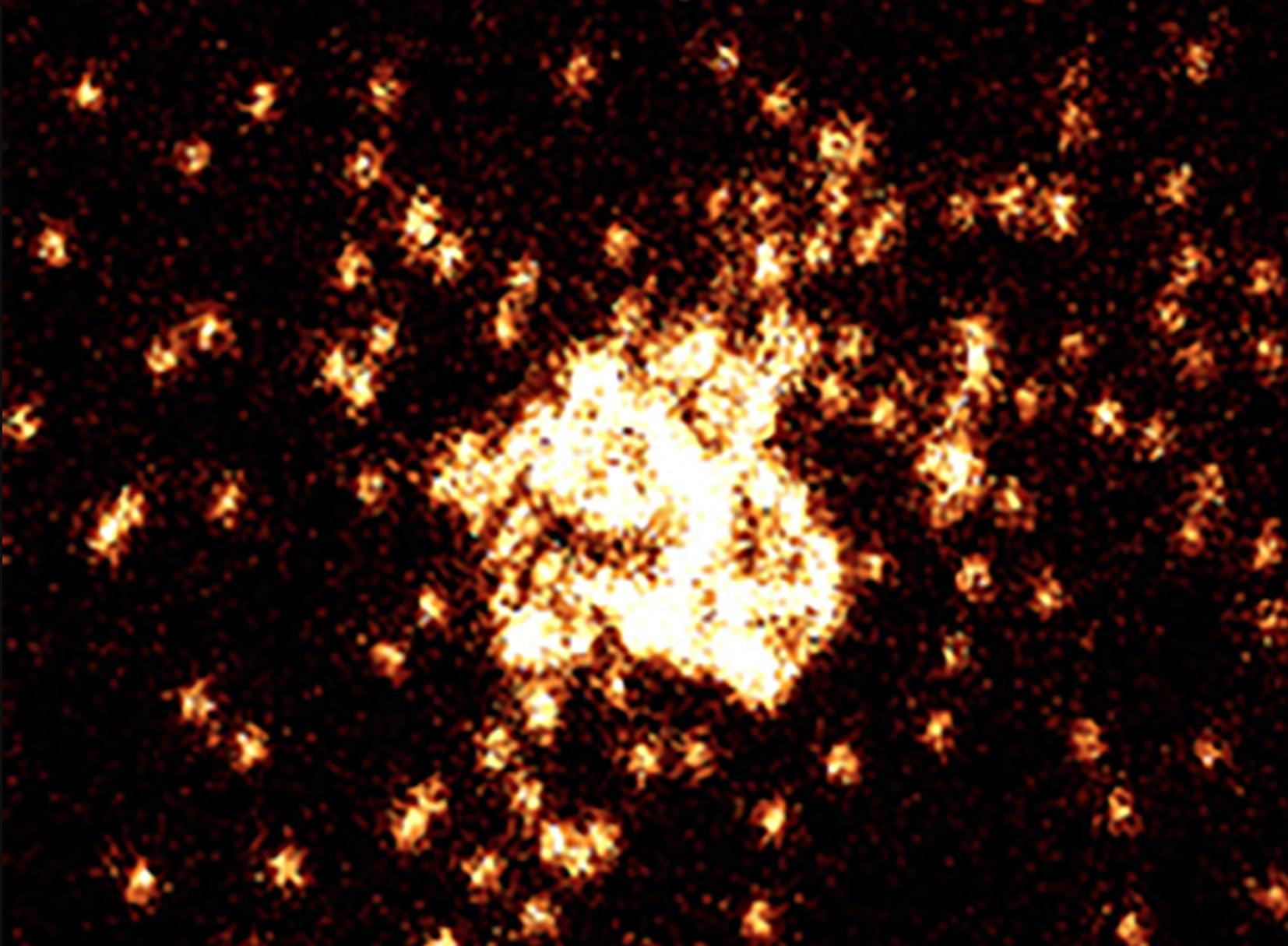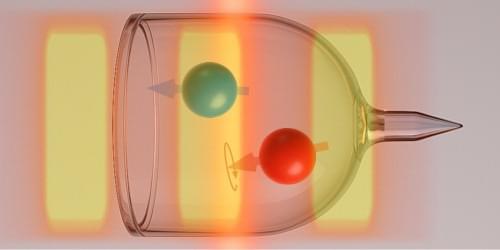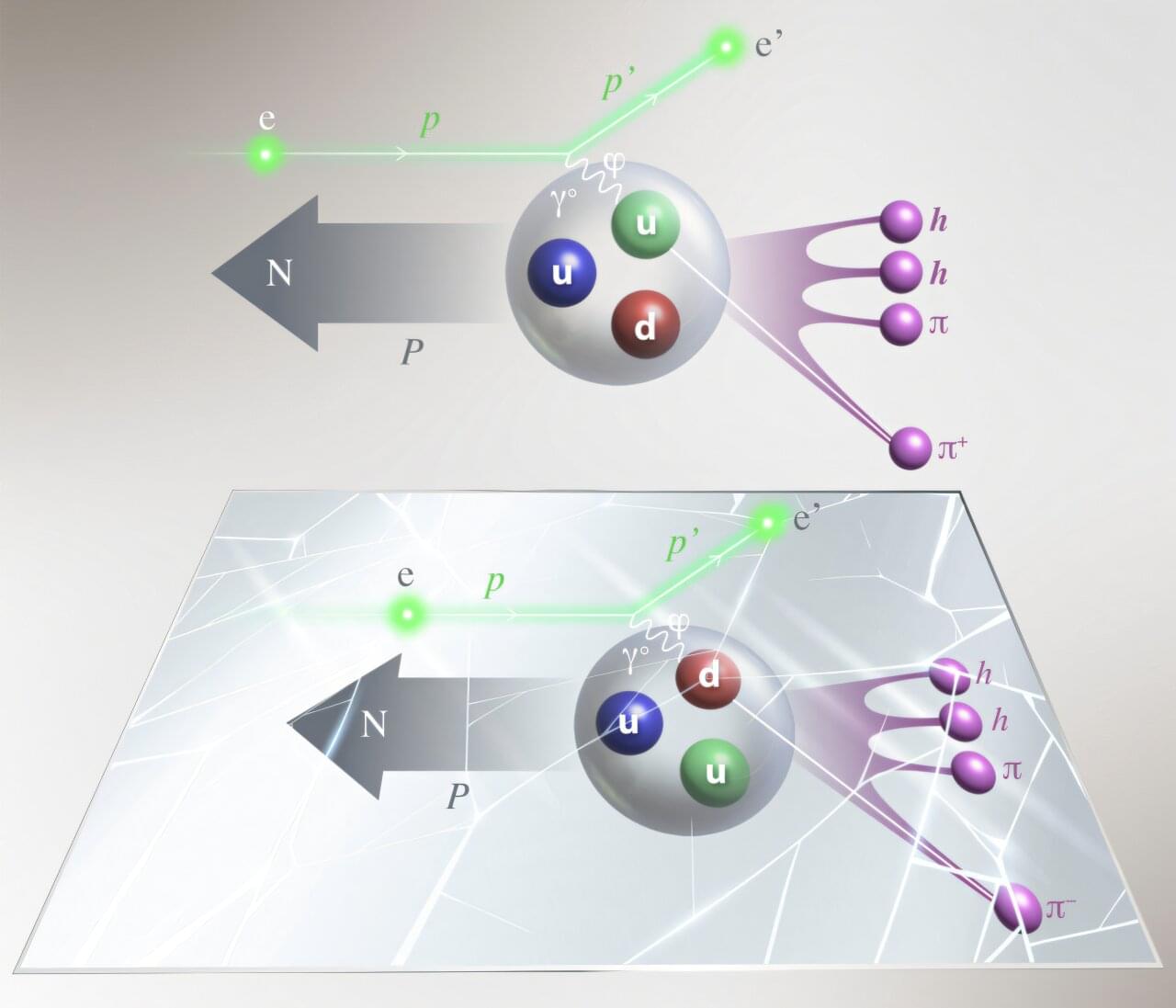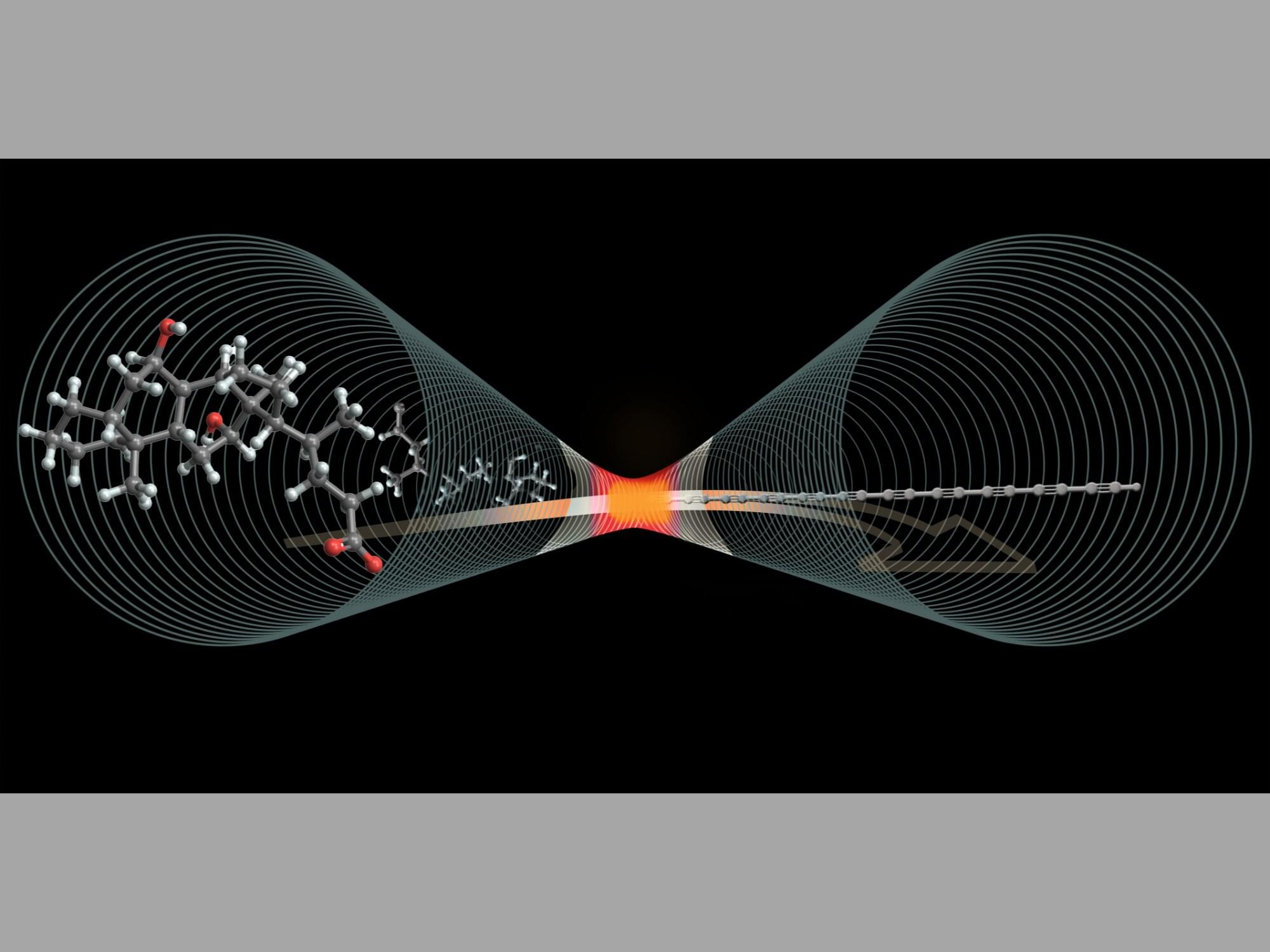MIT researchers created a quantum microscope, capturing the first images of atoms interacting freely, revealing unseen quantum behaviors.


For a while, in the Middle Ages, there was a real craze for trying to turn unassuming lead into pure, gleaming gold.
Perhaps those ancient alchemists should have been building a particle collider. According to a new paper, CERN’s Large Hadron Collider produced about 86 billion gold nuclei from high-speed lead nuclei during the facility’s second run, between 2015 and 2018.
This is not actually much gold – mere trillionths of a gram. Nor does it last very long – just fractions of a second. But what’s really cool here is the way physicists quantified the gold production: by counting the number of protons accompanying neutrons involved in the lead interactions using the ALICE (A Large Ion Collider Experiment) detector’s zero degree calorimeters (ZDCs).


An atomic magnetometer uses lasers and a gas of atoms, such as rubidium, to detect magnetic fields. The atoms behave like tiny magnetic compasses, with their spins moving in response to magnetic forces. Using two atomic species—in so-called comagnetometers—boosts performance and opens the possibility of detecting exotic spin interactions predicted in theories that go beyond the standard model of particle physics (see Viewpoint: Spin Gyroscope is Ready to Look for New Physics). Now a new design using a pulsed laser rather than a continuous-laser beam has the potential to improve performance even further [1].
Atomic magnetometry requires two light beams: a pump beam that aligns the atomic spins in a certain direction and a probe beam that detects the movement of those spins relative to that alignment direction. With a single species of atoms, one can measure the local magnetic field. With two species of atoms, one can cancel the magnetic-field signal and other background effects and search for possible spin-dependent signals from dark matter or from other hypothetical particles.
Jingyao Wang from Princeton University and her colleagues have developed a comagnetometer based on a bell-shaped vapor cell filled with rubidium and neon atoms. By applying their pump laser in a repeating pulse pattern (on for 6 ms, off for 20 ms), the researchers can make spin measurements “in the dark” and avoid the noise of the laser. With further improvements, the team predicts its comagnetometer will be 4 times more sensitive than current continuous-laser comagnetometers to potential signals from axions or from other hypothetical particles.

From the powdered wings of a butterfly to the icy spines of a snowflake, symmetry is a common feature in nature. This often even holds true down to the smallest bits of matter, which helps nuclear physicists ensure their measurements of the inhabitants of the subatomic world are accurate. The trick is knowing when something you’re measuring is symmetric and when it is not.
Now, nuclear physicists conducting experiments at the U.S. Department of Energy’s Thomas Jefferson National Accelerator Facility have found new and unexpected cases of broken isospin symmetry. The discovery upends thoughts on how some particles are produced in experiments and could have implications for future studies of these particles.
The research is published in the journal Physics Letters B.

A joint research team from Seoul National University and Harvard University has developed a next-generation swarm robot system inspired by nature—capable of movement, exploration, transport, and cooperation, all without the need for precise sensors or centralized control.
The study was led by Professor Ho-Young Kim, Dr. Kyungmin Son, and master’s student Kwanwoo Kim at SNU’s Department of Mechanical Engineering, and Professor L. Mahadevan and Dr. Kimberly Bowal at Harvard.
Their approach connects simple, active particles into chain-like structures that can carry out complex tasks without any advanced programming or artificial intelligence. The research is published in Science Advances.

While many research groups worldwide have been searching for dark matter over the past decades, detecting it has so far proved very challenging, thus very little is known about its possible composition and physical properties. Two promising dark matter candidates (i.e., hypothetical particles that dark matter could be made of) are axions and dark photons.
The MAgnetized Disk and Mirror Axion eXperiment (MADMAX) is a large research effort aimed at detecting axions or dark photons using a sophisticated instrument comprised of a stack of sapphire disks and a reflective mirror. In a recent paper published in Physical Review Letters, the MADMAX collaboration published the results of the first search for dark photons performed using a prototype of their detector.
“The primary goal of MADMAX is to detect dark matter in the form of axions or dark photons,” Jacob Mathias Egge, first author of the paper, told Phys.org. “These two hypothetical particles are popular candidates for what dark matter might consist of. In our recent paper, we describe the results of a search for dark photons using a small-scale prototype.”

Carbyne, a one-dimensional chain of carbon atoms, is incredibly strong for being so thin, making it an intriguing possibility for use in next-generation electronics, but its extreme instability causing it to bend and snap on itself made it nearly impossible to produce at all, let alone produce enough of it for advanced studies. Now, an international team of researchers, including from Penn State, may have a solution.
The research team has enclosed carbyne in single-walled carbon nanotubes —tiny, tube-shaped structures made entirely of carbon that are thousands of times thinner than a human hair. Doing this at low temperatures makes carbyne more stable and easier to produce, potentially leading to new advancements in materials science and technology, the researchers said.
They called the development “promising news,” as scientists have struggled for decades to create a stable form of carbyne in large enough quantities for deeper investigation.

A team of researchers has developed a technique that makes high-dimensional quantum information encoded in light more practical and reliable.
This advancement, published in Physical Review Letters, could pave the way for more secure data transmission and next-generation quantum technologies.
Quantum information can be stored in the precise timing of single photons, which are tiny particles of light.
